
Grandmother's Apple Cake
5 tablespoons plus 1/4 cup sugar
1 cup AP flour
1/2 teaspoon salt
1 teaspoon baking powder
1 egg
2 tablespoons milk
1 teaspoon vanilla extract
4 tablespoons unsalted butter, at room temperature
2 medium baking apples
1/2 teaspoon ground cinnamon
1. Set the oven to 400 degrees. Spray the bottom of a 10 inch cast iron skillet with cooking oil spray. Sprinkle 2 tablespoons of the sugar into the pan.
2. In a bowl, sift the flour, salt, and baking powder.
3. In another bowl, whisk the egg, milk, and vanilla.
4. In an electric mixer, beat the butter with 1/4 cup of sugar for one minute or until light. Remove the bowl from the mixer stand. Stir in one third of the flour, then one third of the milk. Add the remaining flour and milk in the same way.
5. Use the back of a spoon or your fingertips to spread the batter in the skillet - it will be thick and sticky.
6. Peel and core the apples. Slice them 1/8 inch thick. Starting at the outer edge, arrange the apples on the cake in slightly overlapping concentric circles.
7. In a small bowl, mix the remaining 3 tablespoons with the cinnamon. Sprinkle over the apples.
8. Bake the cake for 20 to 25 minutes or until the apples are tender and a skewer inserted into the cake comes out clean. Let the cake cool for 10 minutes.
9. With a wide metal spatula , loosen the edges and bottom of the cake from the pan. Place a large plate on top and invert the pan and cake together. Lift off the pan. Place another plate on top of the cake and invert it again, so the cake is right side up. Serve warm.
Be careful not to burn this cake!
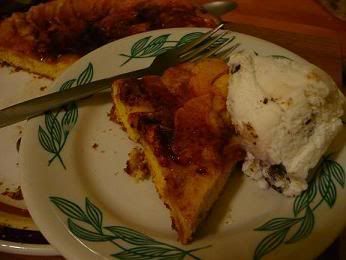
Heirloom apples are a palette of the past. Their names reach across centuries: Ashmead Kernel, Cox Orange Pippin, Lamb Abbey Pearmain, Reine de Reinette, Sheepnose or Black Gilliflower. Their flavor does, too--either one in the mouth takes you to a tree in a stone-edged field, discussing apples with a man in leather and homespun.
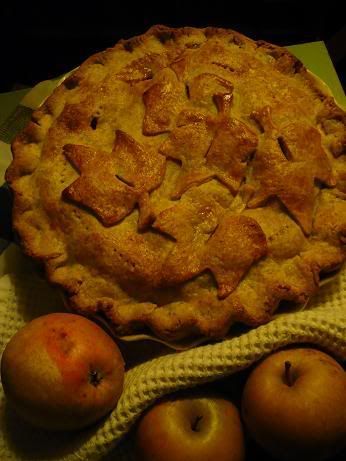
Hudson's Golden Gems
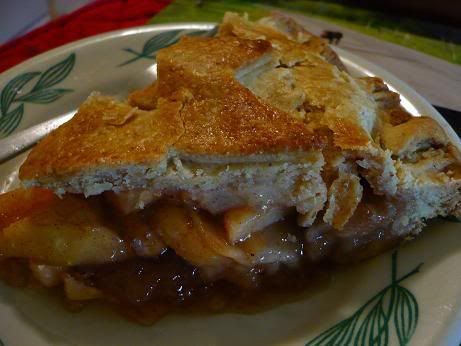
Our neighbor Willis Wood makes cider from antique apples on a press bought new by his family in 1882.
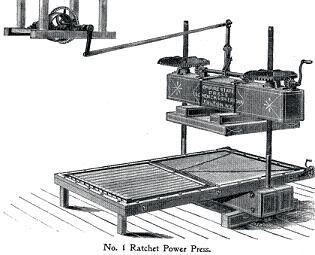
The best cider comes from knowing the apples and how to combine them.
This cake uses 3 cups of it.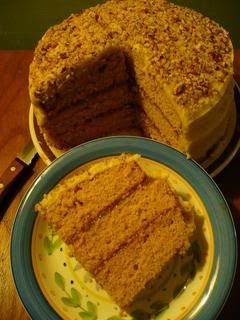
Willis boils fresh cider into syrup and jelly.
A little more than half way along the forest trail that leads from my house to the cider mill, the scent of apples meets us, pungent, sweet and vinegary, odd against the smell of fallen leaves.

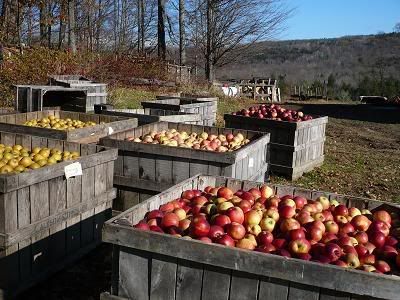
Beth Hensperger's Fresh Apple-Walnut Loaf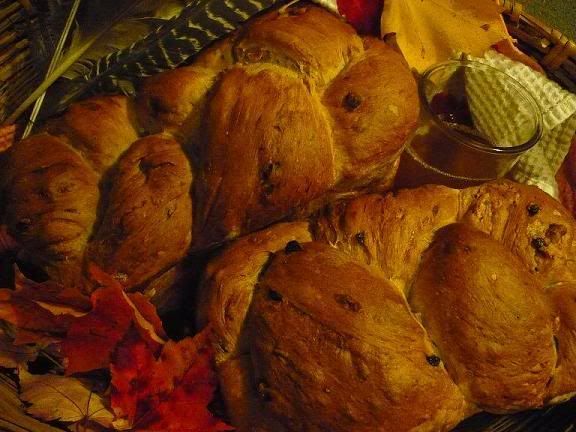
Ingredients
1 tablespoon active dry yeast
2 tablespoons light brown sugar
1 cup warm water (105-115 F)
1 cup warm milk
6-6 1/2 cups unbleached all purpose flour or bread flour
2 medium-large tart cooking apples, peeled, cored, and coarsley chopped (2-3 cups)
1/2 cup dried currants
1/2 cup walnuts, coarsley chopped
2 tablespoons walnut oil
2 large eggs, at room temperature
2 teaspoons ground cinnamon
1/2 teaspons ground mace
1/2 teaspoon ground allspice
1 tablespoon salt
1. In a large bowl using a whisk or in the work bowl of a heavy duty electric mixer fitted with the paddle attachment, combine the yeast, brown sugar, warm water, warm milk, and 2 cups of flour. Beat until smooth, about 1 minute. Cover the bowl loosly with plastic wrap and let stand at room temperature until foamy, about 1 hour.
2. Add the apples, currants, walnuts, oil, eggs, cinnamon, mace, allspice, salt, and 1 cup more of the flour. Beat until creamy, about 2 minutes. Add the remaining flour, 1/2 cup at a time, until a soft dough that just clears the sides of the bowl is formed. Switch to a wooden spoon when necessary if making by hand.
3. Turn the dough out onto a lightly floured work surface and knead until smooth and springy yet firm, about 5 minutes, dusting with flour only 1 tablespoon at a time as needed to prevent sticking. Push back any fruit or nuts that fall out during the kneading.
4. Place the dough in a greased deep container. Turn the dough once to coat the top and cover with plastic wrap. Let rise at room temperature until doubled in bulk, 1 1/2 - 2 hours.
5. Gently deflate the dough. Turn the dough out onto a lightly floured work surface. Grease two 9 by 5 inch loaf pans. Shape into two braided or regular loaves. Let rising pans till tops are an inch above rim of pan, about 45 minutes.
350 degrees for 45-50 minutes.
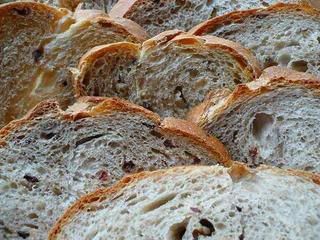

A wild apple tree is as gnarled and angular as an elderly aunt.
Most evenings deer gather beneath this tree, till the snows bury the remains of the season's apple crop.
season's apple crop.